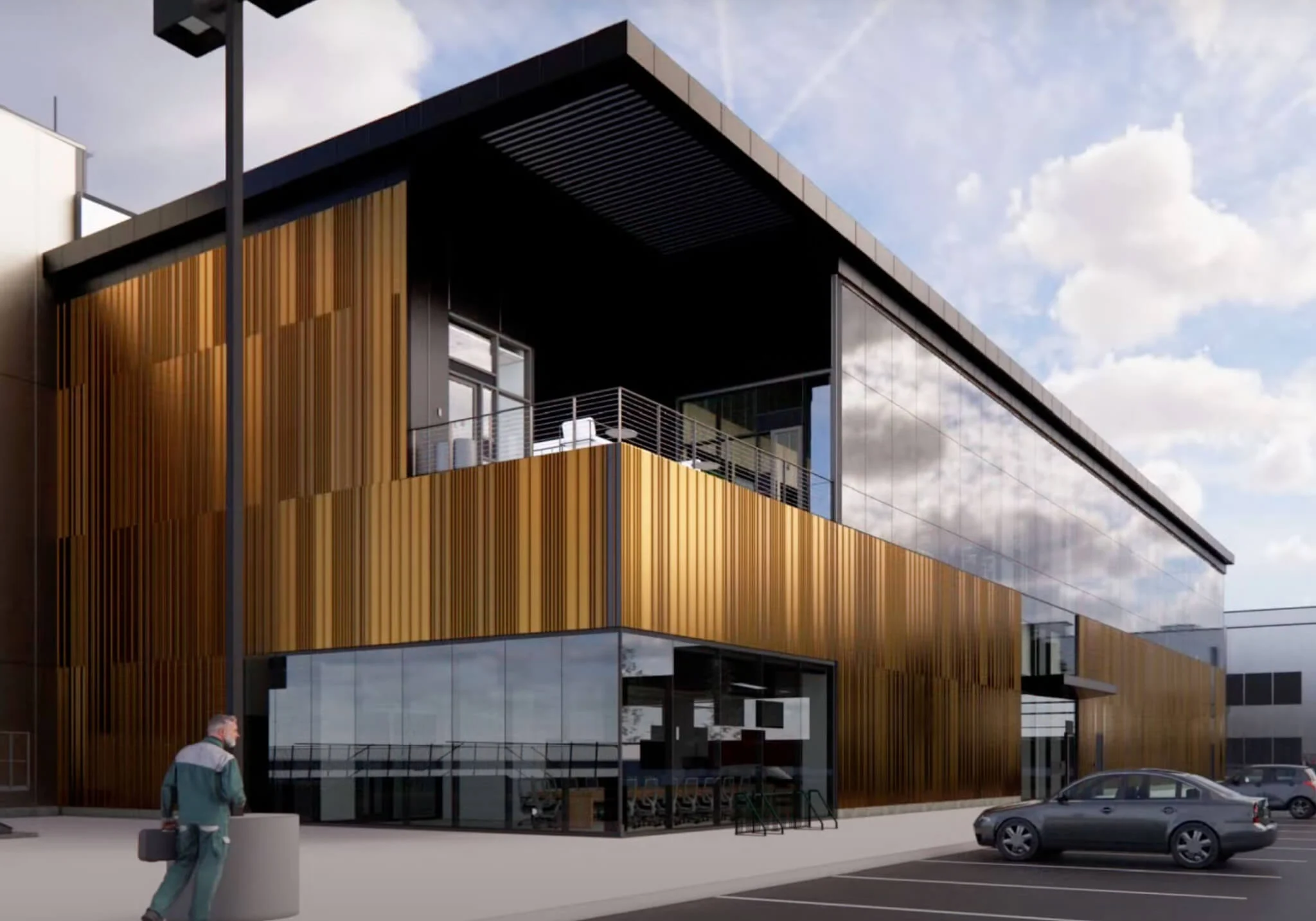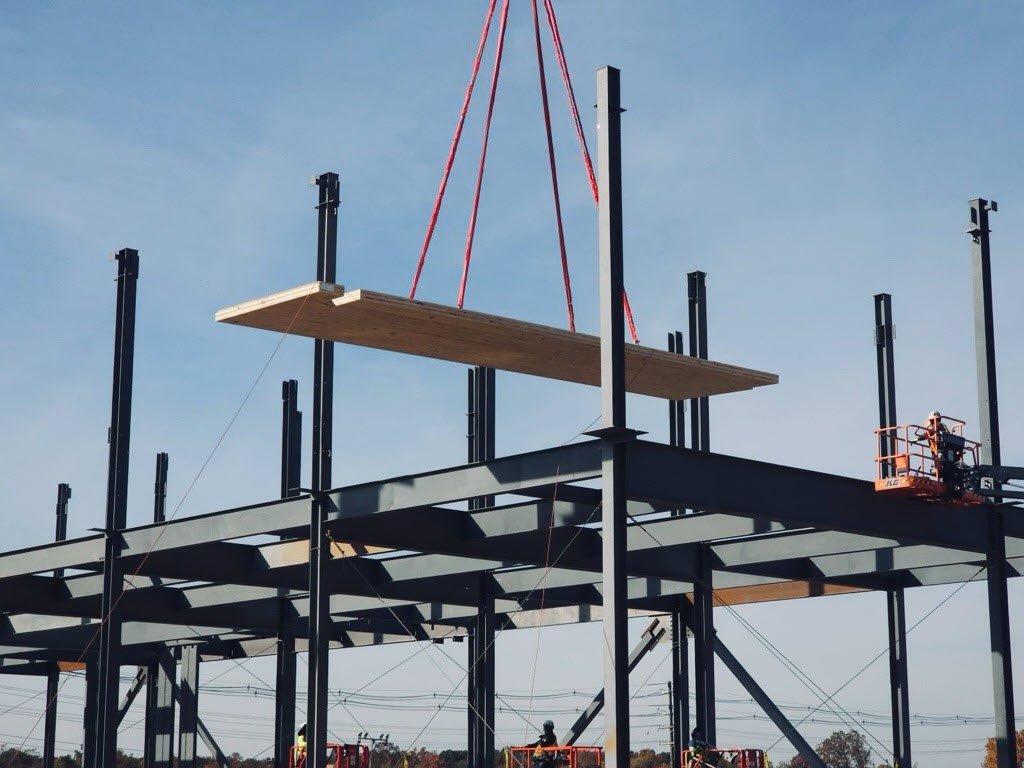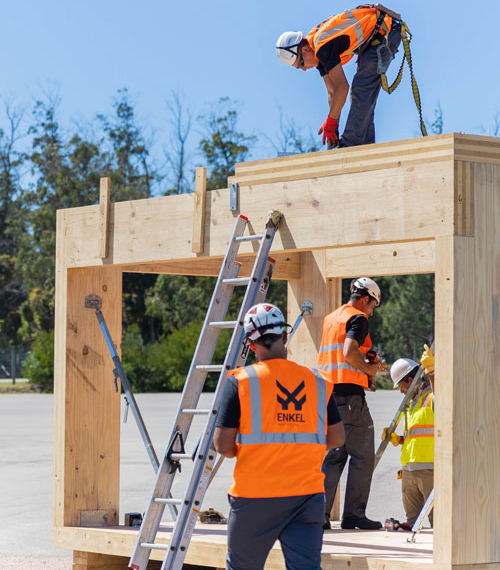Microsoft is building two new data centers in Virginia that incorporate CLT (Cross-Laminated Timber) as one of the main components of its buildings in an effort to reduce reliance on steel and concrete and thus reduce the carbon footprint of its facilities.

Source: https://news.microsoft.com/source/features/sustainability/microsoft-builds-first-datacenters-with-wood-to-slash-carbon-emissions/
What is CLT and how is it used?
CLT is a prefabricated panel consisting of 3 to 9 layers of solid wood oriented in alternating directions and glued under pressure. This arrangement gives the material high rigidity and consistency, as well as strong durability against fire. If you want to know more about this product, click here.
Impact on emissions
Partially replacing conventional steel floors, these hybrid data centers combine CLT, steel and a thin layer of concrete reinforcement. The result is a 35% reduction in embodied emissions compared to mostly metal constructions, and up to 65% reduction compared to the usual precast concrete typology.
Construction and assembly advantages
- Prefabrication and speed of assembly: CLT panels are manufactured in the workshop to millimeter tolerances, which minimizes on-site assembly time and reduces exposure to climatic factors.
- Structural lightness: compared to concrete, cross-laminated timber panels weigh up to 50% less, simplifying construction and reducing the need for additional metal reinforcement.
- Thermal and acoustic performance: wood provides natural insulation, improving the energy efficiency of equipment spaces and reducing dependence on air conditioning units.
- Durability and maintenance: CLT offers resistance to humidity and wear, and facilitates future interventions or expansions.

Source: https://news.microsoft.com/source/features/sustainability/microsoft-builds-first-datacenters-with-wood-to-slash-carbon-emissions/
Specific advantages of the project and its future projection
Microsoft has clear economic benefits: mass production of CLT modules reduces material and labor costs by a large percentage, accelerates lead times and reduces financial expenses due to delays.
It also fits into the 2030-ODS Agenda, supporting Microsoft’s commitment to be “carbon negative” by 2030 and encouraging the creation of regulations that recognize and value low-carbon buildings. This initiative drives a ripple effect in the industry, encouraging other players – such as Mass Timber’s Apple store in Miami – to adopt cross-laminated timber solutions and contribute to a more sustainable and competitive building market across industries.
Sources:
Microsoft builds first datacenters with wood to slash carbon emissions
https://www.dezeen.com/2025/01/28/timber-data-centre-microsoft-virginia/


